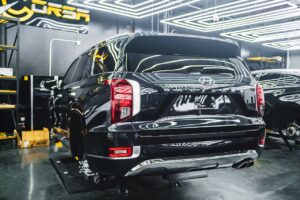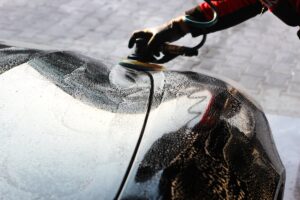Choosing the right tires for your car is crucial for ensuring safety, performance, and a smooth ride. This tire buying guide will equip you with the knowledge to make an informed decision when it comes to selecting new tyres.
Tire buying guide
- The most common and crucial indicator of tire wear is tread depth. Tires have built-in tread wear indicators, small raised bars across the tread grooves. When the tread surface wears down to the level of these bars, it’s time for a replacement. In most countries, the legal minimum tread depth is around 1.6 millimeters (mm). However, for optimal safety, it’s highly recommended to replace your tires when the tread reaches 3 mm or even sooner in certain situations.
- Beyond the Tread: Other Signs to Watch Out For
- While tread depth is the primary indicator, there are other signs that might suggest your tires need replacing, even if the tread depth hasn’t reached the wear bars yet:
- Uneven wear: If your tires show uneven wear patterns, such as excessive wear on the edges or center, it could be due to improper inflation, alignment issues, or worn-out suspension components. Uneven wear can compromise handling and shorten the lifespan of your tires.
- Visible damage: Cracks, bulges, or cuts on the sidewall or tread can significantly weaken the tire and pose a safety risk. Even seemingly minor damage should be inspected by a professional to determine if replacement is necessary.
- Age: Even if the tread depth seems adequate, tires can degrade over time due to natural aging and exposure to elements like sunlight and heat. This can make them less flexible and more susceptible to cracking, even if the tread looks good. It’s generally recommended to replace tires every six to ten years, regardless of tread depth.
- Vibration: Feeling vibrations in the steering wheel or throughout the car while driving can be a sign of tire problems, such as imbalance or worn-out tread.
2. Find Your Tyre Size:
- Consult your owner’s manual: This will list the recommended tyre size for your specific vehicle model.
- Check the sidewall of your current tyres: The size information is typically displayed in a format like “205/55R16 91V,” where:
- 205: Section width of the tyre in millimetres.
- 55: Aspect ratio (height of the tyre sidewall as a percentage of the width).
- R: Indicates radial construction (most common type).
- 16: Diameter of the rim in inches.
- 91: Load index (weight capacity).
- V: Speed rating (maximum safe speed).
3. Consider Your Driving Habits:
- Normal everyday driving: Choose all-season tyres that offer a balance of performance, comfort, and tread life.
- Frequent highway driving: Consider touring tyres that prioritize fuel efficiency and high-speed stability.
- Off-road driving: Opt for all-terrain tyres with deeper treads for better traction on unpaved surfaces.
- Performance driving: High-performance tyres offer superior handling and grip but may wear out faster and sacrifice some comfort.
4. Safety Features:
- Tread depth: Adequate tread depth is vital for safe water evacuation and maintaining traction, especially in wet conditions. The legal minimum tread depth in most countries is 1.6 mm, but it’s recommended to replace your tyres when the tread reaches 3 mm or less for optimal safety.
- Speed rating: Never choose a tyre with a speed rating lower than your vehicle’s recommended rating. Exceeding the speed rating can lead to tyre failure and potential accidents.
- Load index: Select tyres with a load index that can support the weight of your car and typical cargo. Overloading your tyres can negatively impact handling, fuel efficiency, and tread wear.
5. Tyre Construction Types:
- Radial: The most common type, offering a good balance of ride comfort, handling, and fuel efficiency. Radial tyres feature steel belts that run radially from the sidewall to the tread, providing a flexible sidewall and a more rigid tread area. This construction contributes to a smoother ride, better handling, and improved fuel economy.
- Bias-ply: Less common, typically used in older vehicles or for specific applications like trailers due to their lower cost and higher sidewall strength. Bias-ply tyres have layers of fabric cords diagonal to the tread, resulting in a stiffer sidewall and less flexible tread compared to radials. This can lead to a less comfortable ride, lower fuel efficiency, and poorer handling. However, their simpler construction makes them more affordable and offers higher sidewall strength, making them suitable for applications requiring additional sidewall support.
- Run-flat: Designed to allow limited driving distance even with a puncture, providing temporary mobility. Run-flat tyres have reinforced sidewalls that can support the weight of the vehicle even when deflated, allowing you to drive to a safe location for repair or replacement. This feature offers added convenience and safety in case of a puncture, but run-flat tyres are typically more expensive, have a stiffer ride, and may not be compatible with all vehicles due to space limitations in the wheel wells.
Additional Tips:
- Research and compare tyre options: Look for reviews from reputable sources and consider various brands within your budget. Online resources and tyre manufacturer websites can provide valuable information on tyre performance, features, and warranties.
- Consult a tyre professional: A qualified tyre professional can help you choose the right tyres based on your vehicle’s specifications, driving habits, and budget. They can also advise on proper tyre maintenance and answer any questions you may have.
- Prioritize safety: Don’t compromise on safety features by opting for cheaper tyres that don’t meet your vehicle’s specifications or your driving needs. Remember, your tyres are the only point of contact between your car and the road, and selecting the right ones is crucial for a safe and enjoyable driving experience.



